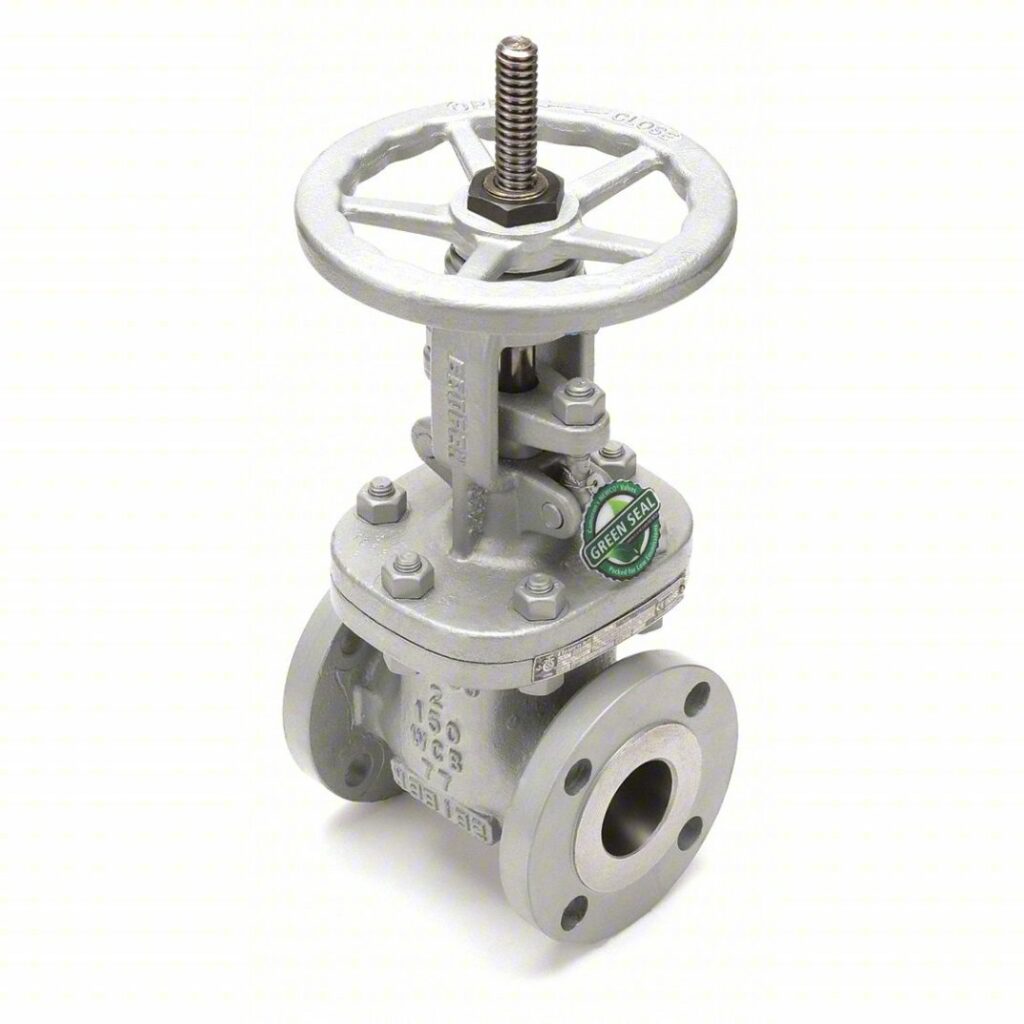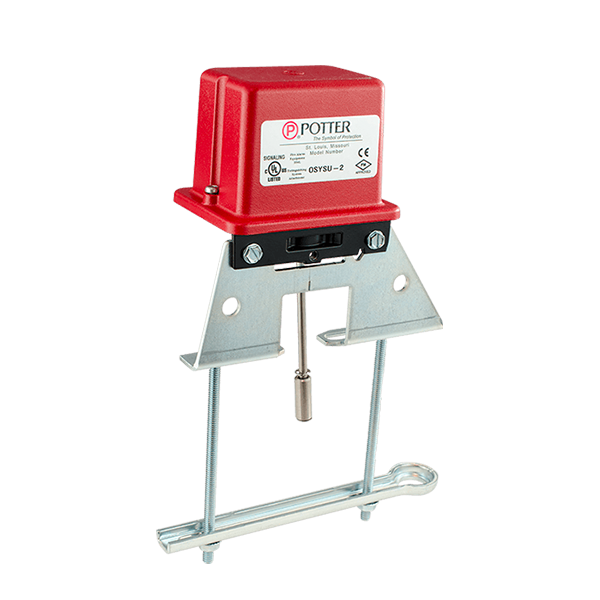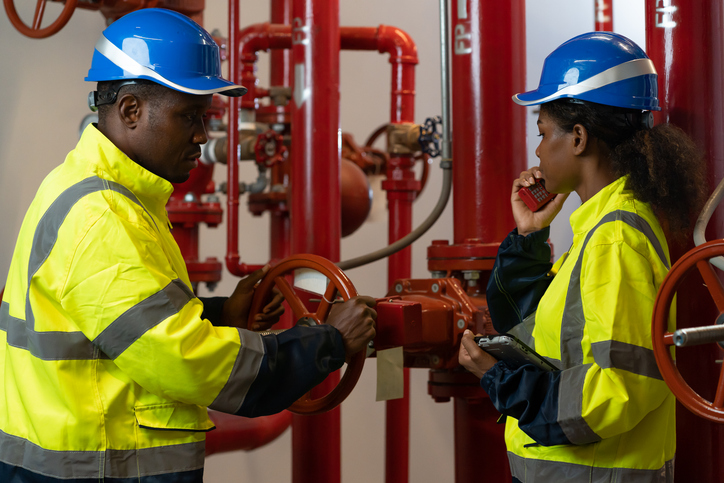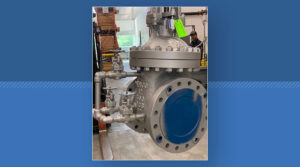OS & Y Valve
The OS & Y valve is a configuration common in control valves that serve fire sprinkler and standpipe systems. Also, they are common in several industrial applications. OS & Y means ‘outside stem and yoke’ or ‘outside screw and yoke’, and it has this name because of its distinctive design features. In this article, we review the features of an OS & Y valve, its tamper switch, typical specifications, compare it to NRS valves, and highlight some applications.
Features of OS & Y Valve
The OS & Y configuration is common with gate valves, but can also serve in globe valves. It offers two distinctive features which are the outside screw and yoke.

-
- Outside Screw: One prominent feature of the OS & Y valve is the visual indication of the valve position. The outside screw/stem provides this feature. When the valve is in the closed position, the stem extends outward, but when in the open position, the stem retracts into the valve body. Visual indication of the valve’s status allows operators to quickly ascertain the condition of the valve from a distance. This is critical, especially in emergency situations, which makes it a key safety feature. It also helps to ensure accurate control of fluid flow.
-
- Yoke: The yoke plays an equally important role as it provides support and stability to the stem. It connects the stem to the valve body, allowing for smooth and precise operation. In addition, it enhances structural integrity and long-term durability of the valve by making it capable of withstanding high pressures.
OS & Y Tamper Switch

A tamper switch is an electromechanical device that monitors a valve status and sends a warning signal if it is partially open or closed. It is a common feature in OS & Y valves, especially when they serve in fire protection systems. These systems require access to a constant water supply in the event of a fire. If the OS & Y valve is not fully open, it obstructs water flow and the sprinklers will not activate as intended.
Moreover, keeping this valve open is important for its long-term care and maintenance. A closed OS & Y valve can lead to pressure loss in the system over time due to trapped air or minor leaks. Hence, this tamper/supervisory switch is a requirement in many building codes for OS & Y valves in fire protection systems.
Typical Specifications
OS & Y valves are available in various sizes, materials, and pressure ratings to suit diverse applications. QRC has an array of these on offer such as Cameron’s Orbit Valves with some of its specifications as follows:
-
- Size Range: From small diameters (2 inches) to those that serve in larger industrial setups (30 inches and even beyond).
-
- Construction Materials: This varies according to the valve part, but usually made of carbon steel, stainless steel, duplex SS, and high-nickel alloys. External protective coatings are available to improve durability in corrosive environments.
-
- Pressure and Temperature Ratings: Valves on offer range from ASME Class 150 to 2500. The valve materials are suitable for temperatures between -50℉ and 800℉.
-
- End Connections: Valves may feature threaded, flanged, socket-welded or butt-welded end connections.
Inspection, Testing, and Maintenance of OS & Y Valve

The inspection, testing, and maintenance requirements of an OS & Y valve depends on its application and manufacturer. For example, control valves used in fire sprinkler systems are governed by NFPA 25. According to this standard, the following should be assessed regularly:
-
- Proper signage markings.
-
- External leakages.
-
- Correct positioning.
-
- Valves are sealed, locked, or supervised.
-
- Accessibility.
The frequency of these inspections depends on how well the valve is monitored. Without any lock, seal, or supervisory device like a tamper switch, the valve requires a weekly inspection. If any of the aforementioned security systems are in place, the inspection can occur monthly. Like all control valves, annual testing is a requirement, with valve status tests conducted after each time it is closed or operated.
OS & Y Valves vs NRS Valves
Although OS & Y and Non-Rising Stem (NRS) gate valves serve similar functions, key differences exist between these designs.
| Parameter | OS & Y | NRS |
| Construction | The stem is external to the valve body, thus providing visual indication of the valve’s position. | In contrast, the valve stem does not protrude from the body, hence, it does not provide visual indication of the valve position. |
| Size and Installation | Because of the height dimension of the valve, there is a need for a large installation space. | The height dimension is significantly smaller than in an OS & Y, so a smaller installation space suffices. |
| Valve Operation | The thread transmission between the stem and steering wheel drives the gate to rise and fall. | The rotation of the valve stem at a fixed point drives the valve gate. |
| Maintenance | As the valve stem is outside the body, it makes it convenient for maintenance and lubrication. | Maintenance and lubrication is more difficult, and the stem is often subject to erosion/corrosion from the flow media. |
Applications
OS & Y valves find application in a wide range of industries and systems, including:
-
- Water Distribution: Municipal water supply networks utilize OS & Y valves to control water flow within distribution pipelines, reservoirs, and treatment facilities. The visual indication of valve position is particularly valuable for operators managing large-scale water infrastructure.
-
- Oil and Gas: In the oil and gas industry, OS & Y valves are employed in upstream, midstream, and downstream operations. These valves regulate the flow of crude oil, natural gas, and refined products in pipelines, refineries, and offshore platforms.
-
- Chemical Processing: Chemical processing plants rely on OS & Y valves to control the movement of various chemicals and solvents in manufacturing processes. The tamper-resistant design of OS & Y valves ensures the integrity of critical fluid handling systems in hazardous environments.
-
- HVAC Systems: Heating, ventilation, and air conditioning (HVAC) systems utilize OS & Y valves to regulate the flow of water, steam, or refrigerant in heating and cooling applications. These valves help maintain comfortable indoor environments and optimize energy efficiency in commercial and residential buildings.


